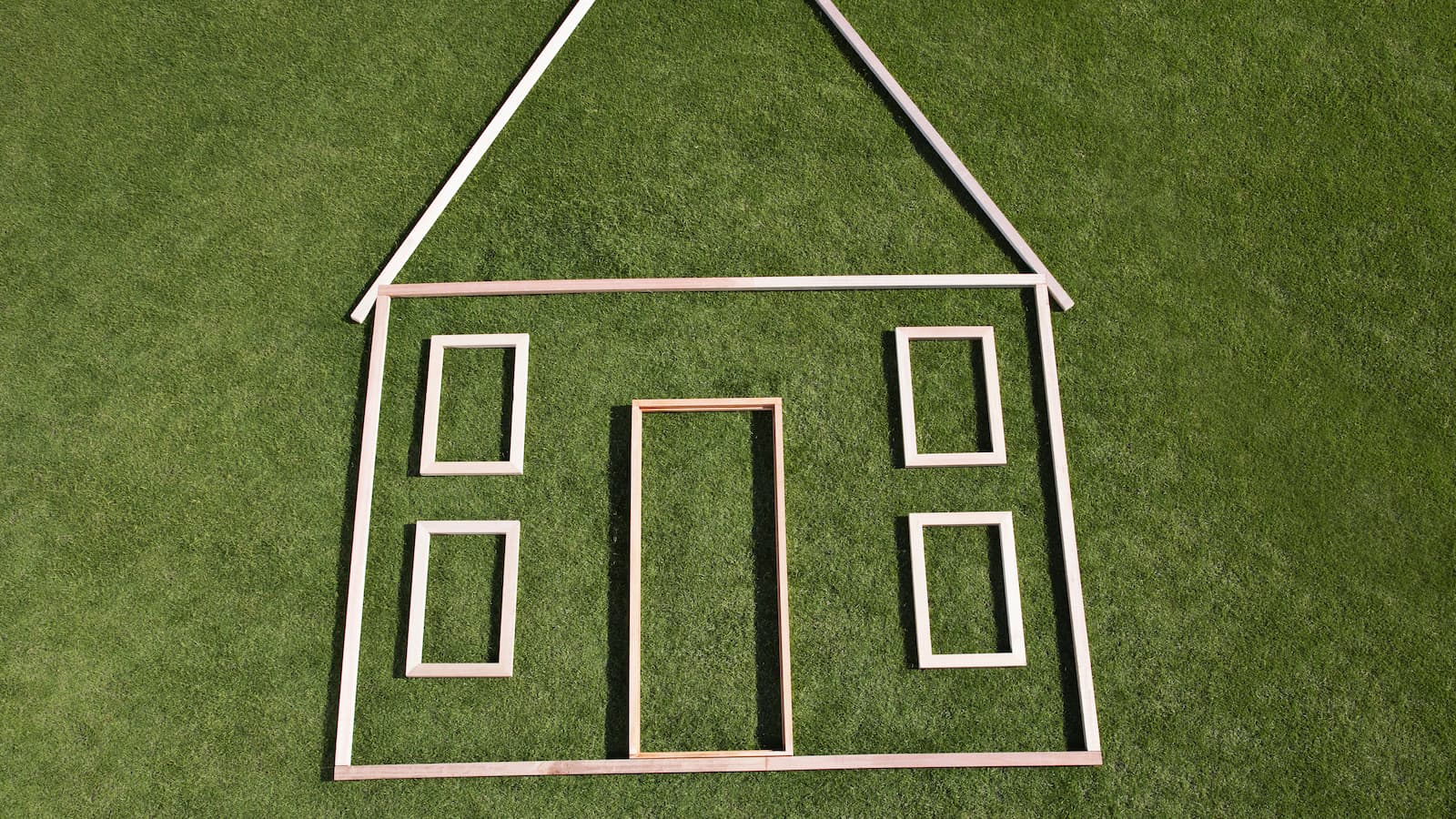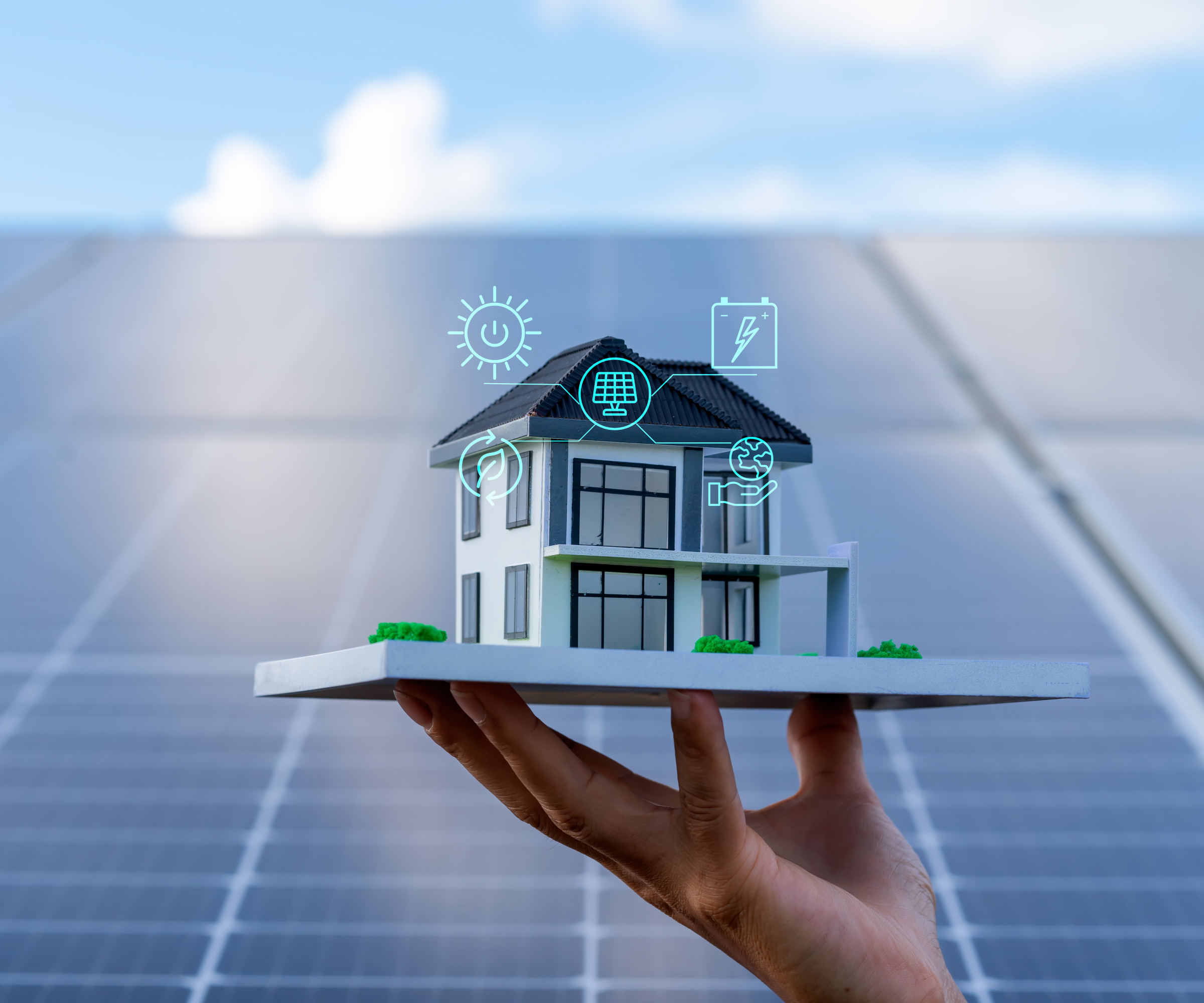Here are five of the greenest home innovations our editors have come across this month
We round up the latest advances in green homes and see how they could influence the future of building and renovating homes — and perhaps save you money too

As the push for more sustainable living intensifies, the homebuilding and renovation market is seeing a surge of innovative materials and technologies designed to reduce environmental impact and increase the energy efficiency of our homes.
With new ways of achieving this constantly being explored and developed it can be difficult to keep track of the latest advances in creating eco homes.
However, we've put together five of the most recent groundbreaking green home innovations we've come across this month, that promise to transform how we build and maintain our homes in the not-so-distant future.
1. Green cement
A new green cement developed by Eco Material Technologies in Utah is poised to revolutionise the construction industry.
This innovative product called PozzoSlag is made from fly ash – a byproduct of coal combustion – and is produced at room temperature, unlike traditional cement which requires high heat and generates substantial carbon emissions. PozzoSlag's production also uses less water.
Eco Material Technologies sources fly ash from around 1,000 sites, including previously disposed materials, and estimates there are around 2 billion tons available. This sustainable approach not only reduces pollution but also has the potential to supply green cement for future construction projects. The concrete industry, responsible for about 8% of global carbon pollution, stands to benefit significantly from such advancements.
Other companies are also working on reducing cement's environmental impact. In Finland, Carbonaide is developing a method to convert carbon dioxide into a usable material for concrete, while a German company is building the world's first carbon-neutral cement plants, capturing nearly all CO2 emissions.
Get the Homebuilding & Renovating Newsletter
Bring your dream home to life with expert advice, how to guides and design inspiration. Sign up for our newsletter and get two free tickets to a Homebuilding & Renovating Show near you.
2. Stone bricks
Traditional clay bricks, which have become increasingly unsustainable due to declining domestic production and high carbon emissions from imports, are being challenged by a promising alternative: stone bricks.
These bricks, made from unused stone sourced from local quarries, offer a low-cost, low-carbon option for construction.
Stone bricks, derived from quarry offcuts that would otherwise be discarded, have a significantly reduced carbon footprint compared to conventional fired clay bricks. With estimates suggesting that stone bricks could cut emissions by up to 75% or more, they present a compelling case for a shift in building practices.
Despite their benefits, stone bricks face challenges in terms of cost and perception. Currently, they are not the cheapest option on the market, and stone is often viewed as a luxury material rather than a practical building resource.
However, proponents argue that embracing the natural variations in stone and investing in its production could make it a more accessible and widespread choice, potentially transforming the construction industry and contributing to significant carbon savings.
3. tado° X revolutionising smart heating
tado°, a leader in home energy solutions, is set to launch its new tado° X smart heating range in the UK this November. Designed to help households manage rising energy costs, the company claims that tado° X could reduce heating bills by an average of 19%.
The range includes six key products:
- Wireless Smart Thermostat X
- Wired Smart Thermostat X
- Smart Radiator Thermostat X
- Wireless Temperature Sensor X
- Heat Pump Optimizer X
- Bridge X (Thread border router)
Key features of tado° X range include simplified setup, smart scheduling, geofencing – which turns down the heating when no one is in the house – and open window detection. The system is also compatible with Matter and Thread standards for integration with other smart home devices.
Christian Deilmann, tado° CPO, emphasised that the new range addresses the need for more accessible and efficient smart heating solutions.
Deilmann claims: "The innovations we have created in our tado° X products bring simplicity for smart heating to life. In the past smart thermostats were largely adopted by those focused on smart tech but tado° X makes these devices more accessible to many more people and will have a bigger impact on bills and the renewable energy transition.”
Interestingly, the range includes a heat pump optimiser. "With the addition of Wireless or Wired Smart Radiator Thermostat X, it allows the individual control of the heating per room in homes with heat pumps – which is unique to tado°," the company claims.
"When used in conjunction with tado°’s Balance for Heat Pumps loadshifting service and dynamic energy tariffs, the Optimizer X can shift operation times of a heat pump to periods when electricity prices are lower each day. It applies to space heating and domestic hot water heating."
The tado° X products will be available in November, with prices ranging from £59.99 for the Bridge X to £229.99 for the Heat Pump Optimiser X.

4. Perovskite solar panels

Scientists at Oxford University have developed a groundbreaking solar energy technology that could significantly reduce the need for traditional solar farms.
Their innovation involves a new, ultra-thin, and flexible light-absorbing material made from perovskite, a compound that can be applied to various surfaces such as cars, buildings and even mobile phones.
This new material, achieved through a multi-junction approach that stacks multiple light-absorbing layers, can now match the energy efficiency of conventional silicon-based solar panels, reaching over 27% efficiency.
The Oxford researchers’ method not only enhances the efficiency of solar energy capture but also offers versatility and flexibility, being about 150 times thinner than silicon wafers.
This advancement allows for the integration of solar technology into everyday objects and surfaces, potentially reducing the dependency on large-scale solar farms and silicon panels. The material’s development represents a significant step toward making solar power more accessible and less expensive.
Oxford PV, a spin-off company from Oxford University, is already manufacturing these perovskite-based solar cells at a large scale in Germany. The researchers hope that the UK will provide more incentives to support domestic manufacturing and commercialisation of such innovations, ensuring the country remains at the forefront of green technology.
5. Ceracool paint that lowers home temperatures
Homeowners can now reduce not only heating costs but also cooling costs with an innovative passive cooling technology developed by the University of Maryland.
The innovation, led by Liangbing Hu, is a microporous coating made from finely ground glass and aluminium oxide. This coating reflects up to 99% of solar radiation and emits heat as infrared radiation, significantly reducing heat absorption and cooling buildings effectively.
The technology, which can be applied to various surfaces like bricks and metal, is now available through Ceracool, a company founded to commercialise this advancement.
Ceracool’s paints, which dry at room temperature, can lower indoor temperatures by 3°C to 10°C and come in various colours, offering improved light reflection compared to traditional paints. This provides homeowners with an efficient and aesthetically flexible solution for reducing cooling costs and improving home comfort.

News Editor Joseph has previously written for Today’s Media and Chambers & Partners, focusing on news for conveyancers and industry professionals. Joseph has just started his own self build project, building his own home on his family’s farm with planning permission for a timber frame, three-bedroom house in a one-acre field. The foundation work has already begun and he hopes to have the home built in the next year. Prior to this he renovated his family's home as well as doing several DIY projects, including installing a shower, building sheds, and livestock fences and shelters for the farm’s animals. Outside of homebuilding, Joseph loves rugby and has written for Rugby World, the world’s largest rugby magazine.
